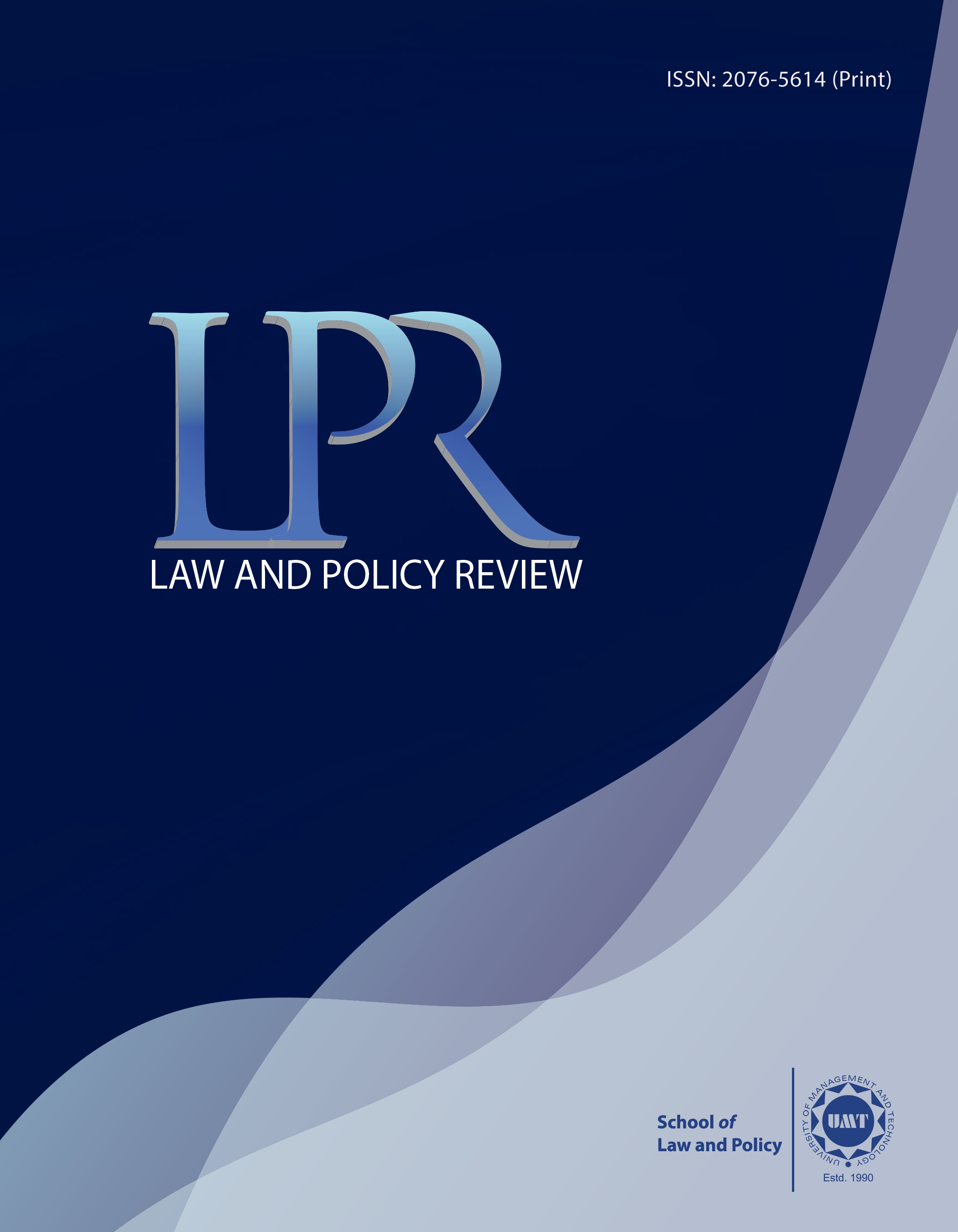Tribalization in Indian Legal System: From Emergence to Extant Challenges
Abstract
 Abstract Views: 0
Abstract Views: 0
The current study attempts to explore the evolution and current state of the tribunal system in India. Tribunals were introduced to provide speedy justice and relieve the burden on the judiciary. However, they have been plagued by procedural and administrative issues. The recent court cases and recommendations have highlighted the need for structural reforms and independence for tribunals. The government has attempted to address these issues through mergers and uniform conditions of service; however, it must be ensured that changes do not compromise the constitutional morals or principles of separation of powers. The study concluded by emphasizing the importance of expert consultation and caution while implementing reforms.
Downloads
References
Akhavan, P. (1996). The International criminal tribunal for Rwanda: The politics and pragmatics of punishment. American Journal of International Law, 90(3), 501–510. https://doi.oirg/10.2307/2204076
Bingham, T. (2005). The Alabama claims arbitration. International & Comparative Law Quarterly, 54(1), 1–25. https://doi.org/10.1093/ iclq/54.1.1
Debroy, B. (2008). Justice delivery in India: A snapshot of problems and reforms (Institute of South Asian Studies Working Paper No. 47). https://www.isas.nus.edu.sg/wp-content/uploads/media/isas_papers /47_WP.pdf
Ghosh, A., Sanyal, D., Chandrashekar, R., & Sekhar, R. (2018). Reforming the tribunals framework in India: An interim report. Vidhi Centre for Legal Policy. https://vidhilegalpolicy.in/wp-content/uploads/2020/06/8thJuneFinalDraft.pdf
Gormley, W. P. (1966). Emerging protection of human rights by the international labor organization. The Alb Law Review, 30, Article e13.
Hudson, M. O. (1933). The permanent court of arbitration. American Journal of International Law, 27(3), 440–460. https://doi.org /10.2307/2189973
Hudson, M. O. (1957). The Succession of the international court of justice to the permanent court of international justice. American Journal of International Law, 51(3), 569–573. https://doi.org/10.2307/2195063
L. Chandra Kumara vs. Union of India & Ors 1997 (2) SCR 1186.
Law Commission of India. (1958). Reform of judicial administration (Law Commission of India Report No. 14). http://www.bareactslive. com/LCR/LC014.HTM
Law Commission of India. (1974). Structure and jurisdiction of the higher judiciary 58(126). http://lawcommissionofindia.nic.in/51-100/ Report58.pdf
Minerva Mills v Union of India 1987 SCC (1) 124.
Minerva Mills vs. Union of India, AIR 1980 SC 1789.
Nair, H. V. (2017, July 1). Modi government decides to bring down central tribunals from 36 to 18. India Today. https://www.indiatoday.in/mail-today/story/narendra-modi-central-tribunals-customs-excise-and-service-tax-appellate-tribunal-1021776-2017-07-01
National Judicial Data Grid. (2020). https://njdg.ecourts. gov.in/njdgnew/index.php
Noyes, J. E. (1999). The international tribunal for the law of the sea. Cornell International Law Journal, 32(1), Article e3.
R. K Jain v Union of India 1993 (65) ELT305 (SC).
Rawat, M. (2020). Applicability and legality of anti-doping proceedings in court of arbitration for sport. SSRN. http://dx.doi.org/10.2139/ssrn.3655038
Robinson, N. (2016). Judicial Architecture and Capacity. In S. Choudhry, M. Khosla & P. B. Mehta. (Eds.), The Oxford handbook of the Indian constitution (pp. 330–449). Oxford University Press.
S. P Sampath Kumar v Union of India. (1987) 1 SCC 124.
Shraga, D., & Zacklin, R. (1994). The international criminal tribunal for the former Yugoslavia. European Journal of International Law, 5, 10–15.
Sridevan, P. (2013, November 15). Whose tribunal is it anyway? The Hindu. https://www.thehindu.com/opinion/op-ed/whose-tribunal-is-it-anyway/article5351733.ece
Supreme Court of India. (n.d.). Types of matters in supreme court of India. https://main.sci.gov.in/statistics
Taxscan Team. (2019, April 13). ITAT gets third bench in Pune. Taxscan. https://www.taxscan.in/itat-third-bench-pune/35030/
Union of India v R Gandhi, President, Madras Bas Association, Civil Appeal No. 3067 of 2004 etc., [2010] 6 S.C.R. 857.
Copyright (c) 2023 Ranjana Dey

This work is licensed under a Creative Commons Attribution 4.0 International License.
LPR follow an open-access publishing policy and full text of all published articles is available free, immediately upon publication of an issue. The journal’s contents are published and distributed under the terms of the Creative Commons Attribution 4.0 International (CC-BY 4.0) license. Thus, the work submitted to the journal implies that it is original, unpublished work of the authors (neither published previously nor accepted/under consideration for publication elsewhere). On acceptance of a manuscript for publication, a corresponding author on the behalf of all co-authors of the manuscript will sign and submit a completed the Copyright and Author Consent Form.





